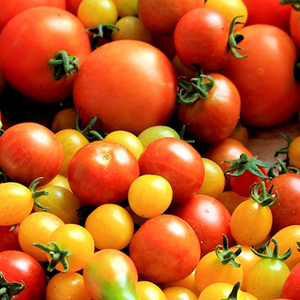Impact of irrigation water deficit on two tomato genotypes grown under open field conditions: From the root-associated microbiota to the stress responses

Accepted: 30 August 2022
APPENDIX 1: 254
APPENDIX 2: 296
HTML: 234
All claims expressed in this article are solely those of the authors and do not necessarily represent those of their affiliated organizations, or those of the publisher, the editors and the reviewers. Any product that may be evaluated in this article or claim that may be made by its manufacturer is not guaranteed or endorsed by the publisher.
In the context of the climate change scenario in the Mediterranean, natural root-microorganism associations have an impact on the resilience and productivity of crops, and the exploitation of these interactions represents innovative, cost-effective and sustainable crop adaptation strategies. An open field experiment with two commercial Italian tomato cultivars was performed. The soil bacterial communities associated with the two commercial Italian tomato genotypes were characterized alongside their physiological and molecular responses under wellwatered and moderate water deficit (100% and 75% of crop evapotranspiration) treatments. The two genotypes showed contrasting responses to water deficit, primarily through diverse rhizosphere microbiota recruitment under the two irrigation treatments.
Highlights
- Two tomato genotypes were studied under water deficit in a pilot field trial.
- The two genotypes responded differently to water stress from eco-physiological and transcriptomic points of view.
- The two genotypes recruited diverse root-associated microbiota, particularly under water deficit.
How to Cite

This work is licensed under a Creative Commons Attribution-NonCommercial 4.0 International License.
PAGEPress has chosen to apply the Creative Commons Attribution NonCommercial 4.0 International License (CC BY-NC 4.0) to all manuscripts to be published.

 https://doi.org/10.4081/ija.2022.2130
https://doi.org/10.4081/ija.2022.2130







